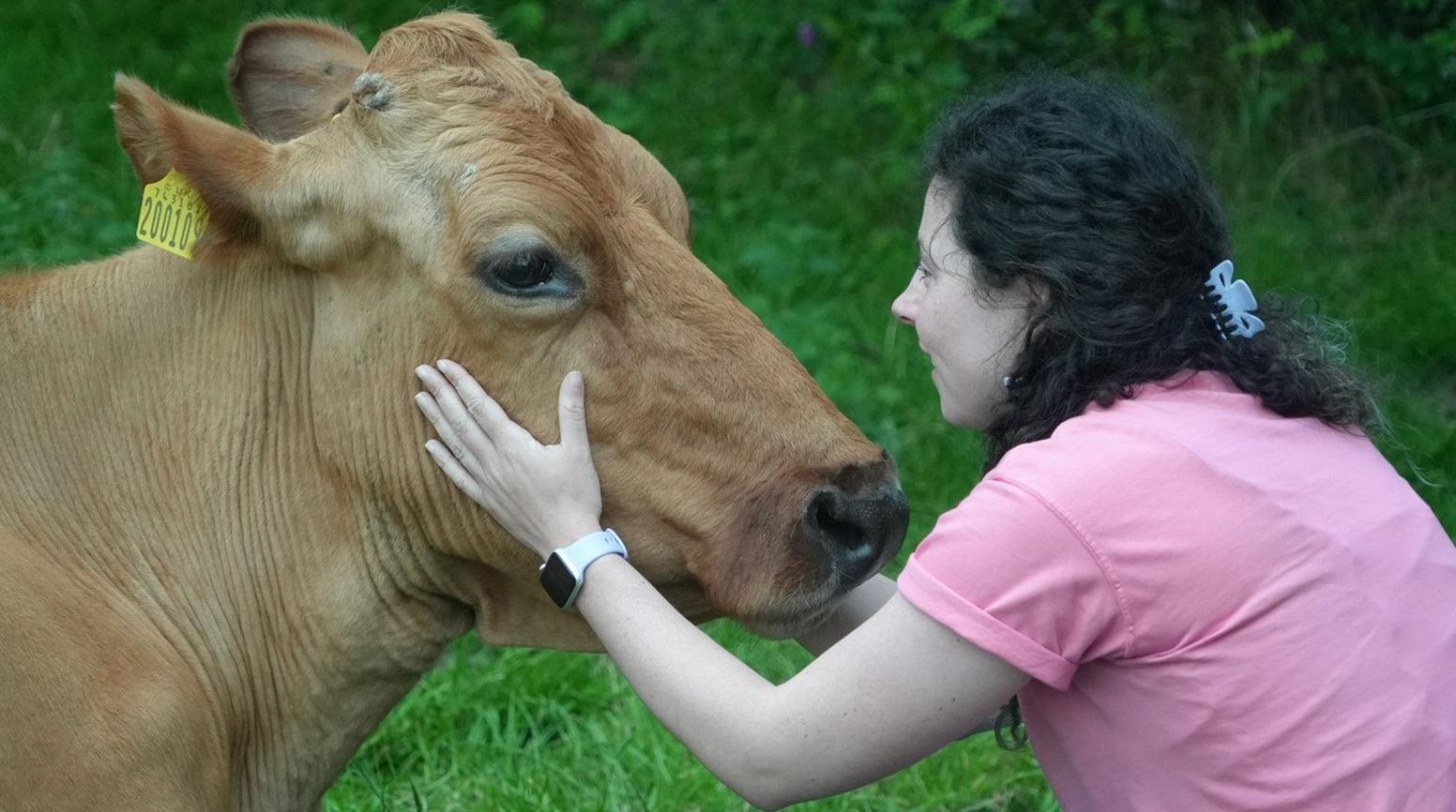'I'm a professional cuddler - let me tell you why a hug feels so good'
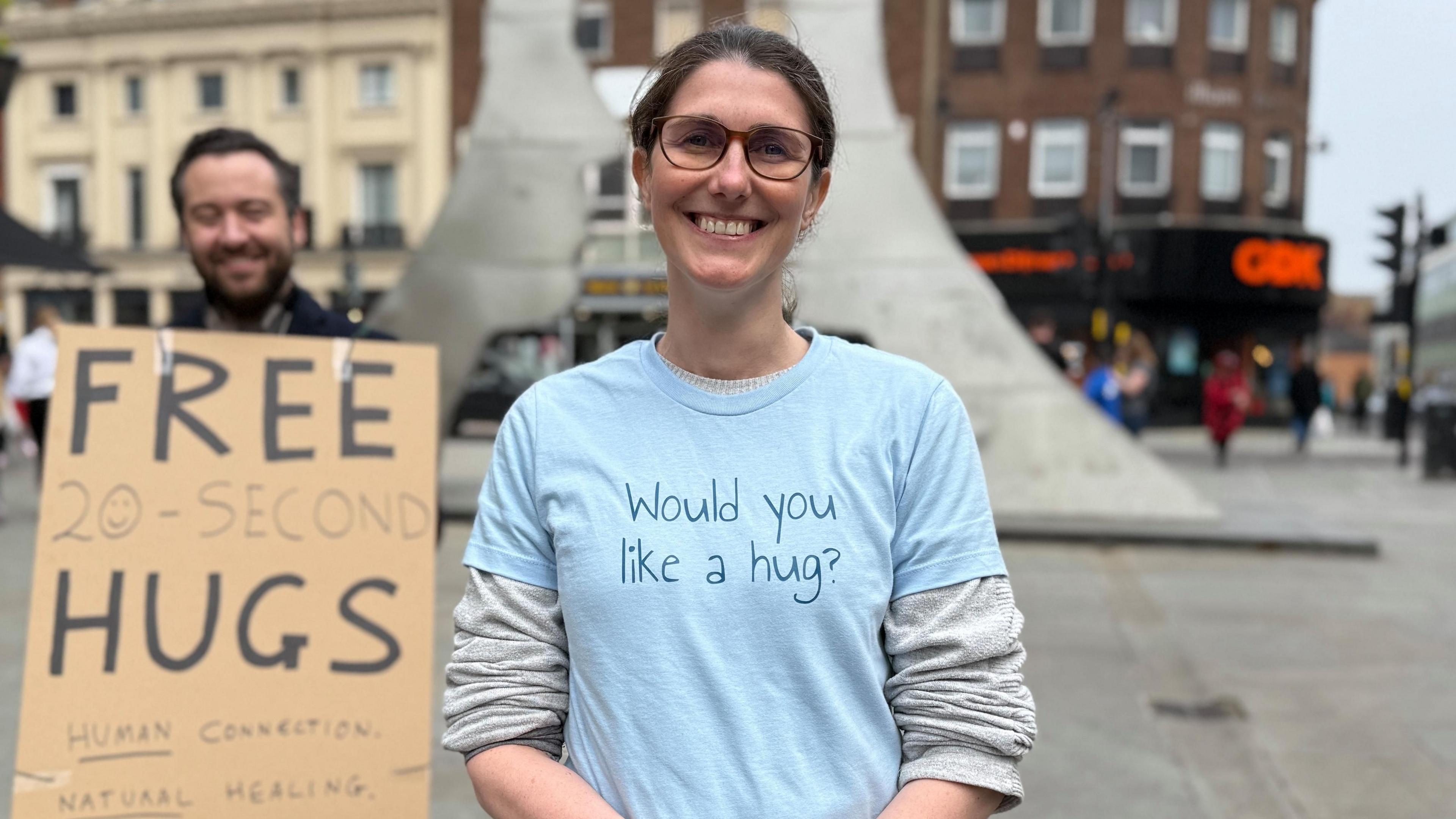
Samii Wood wants to encourage touch as she believes the health benefits are substantial
- Published
Every fortnight, Samii Wood snuggles up with a group of strangers for a "cuddle puddle".
These gatherings see attendees melt into a large nest of cushions and blankets, offering each other platonic touch and comfort.
Samii, who is 41 and based in Bedford, is a professional cuddler, who also offers one-to-one cuddle therapy.
She believes human touch is not just comforting but also has measurable health benefits.
"Your serotonin levels, which is your feel-good hormone, are boosted and so is your oxytocin level, which is your love and bonding hormone," she says.
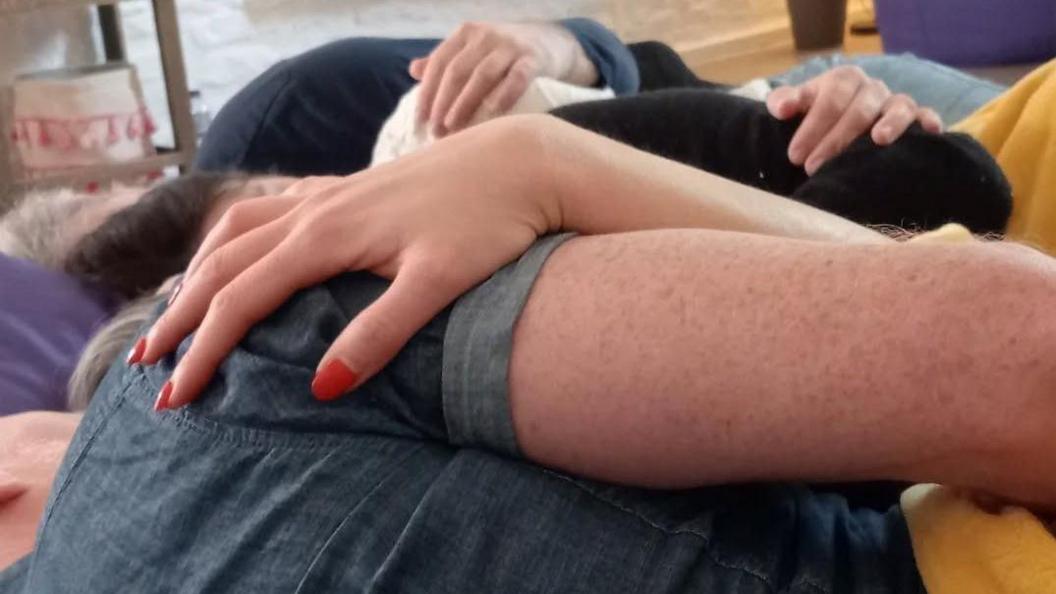
Samii invites people to explore the healing power of touch at "cuddle puddles" in Bedfordshire
Touch can also lower your levels of stress hormone cortisol and "can regulate the nervous system", she adds.
Samii's clients are sometimes suffering with nervous system issues, post-traumatic stress disorder or loneliness.
"People think that my service will be just full of creepy guys," she says.
"It's not like that. I have a variety of ages and males and females that come to these events."
Pep Valerio, 36, from Bedford, has been attending Samii's cuddle puddles for a couple of months.
"It's healing without words. You don't need to know people's problems; you just know your touch is providing aid to them," he said.
Samii describes how in group sessions, attendees are told to imagine certain scenarios to give specific emotional context.
"Sometimes I say, 'Imagine the person you're hugging is the person you'd most like to hug just one more time'," she adds.
"That always chokes me up, and and we've had men and women both literally just sobbing on each other."
One-to-one sessions are catered more towards an individual's needs.
They can range from simply sitting close together and talking with an arm around them, to lying down and spooning.
It can also involve other nurturing touch, such as back stroking or cradling.
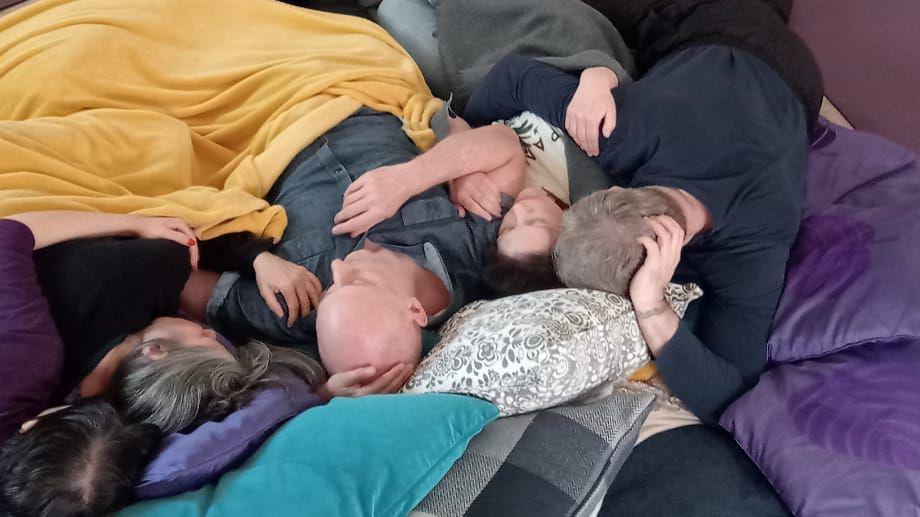
The professional cuddler believes intimate touch can help release happy hormones
Some might raise an eyebrow at the thought that people are paying for this, but Sammi stresses it is a "fully clothed, platonic, nurturing service".
To safeguard all involved, she screens clients before taking them on and gets them to sign consent forms that explicitly state boundaries.
"It's very client-led, so they tell me what they want and what they're comfortable with. It's an ongoing dialogue," Samii says.
She acknowledges that intimate touch can lead to arousal, but in those cases she enforces a break or change of position to refocus clients on the nurturing aspect of the session.
There is no regulatory body in the UK for this type of therapy, but professionals like Samii can gain accreditation from Cuddle Professionals International (CPI), external.
This body insists its members are taught to observe "ethical touch protocols" that rely on informed consent.
While many practices may uphold professional standards, it is potentially an easy environment to misuse and exploit.
Samii says people can report any wrongdoing to the police, local authority or CPI.
The body was founded by wellness expert Claire Mendelsohn, who according to her website, "recognised the need for regulation within the profession".
CPI is now a registered college with the Complementary Medical Association, and approved by the International Institute for Complementary Therapists to deliver training.
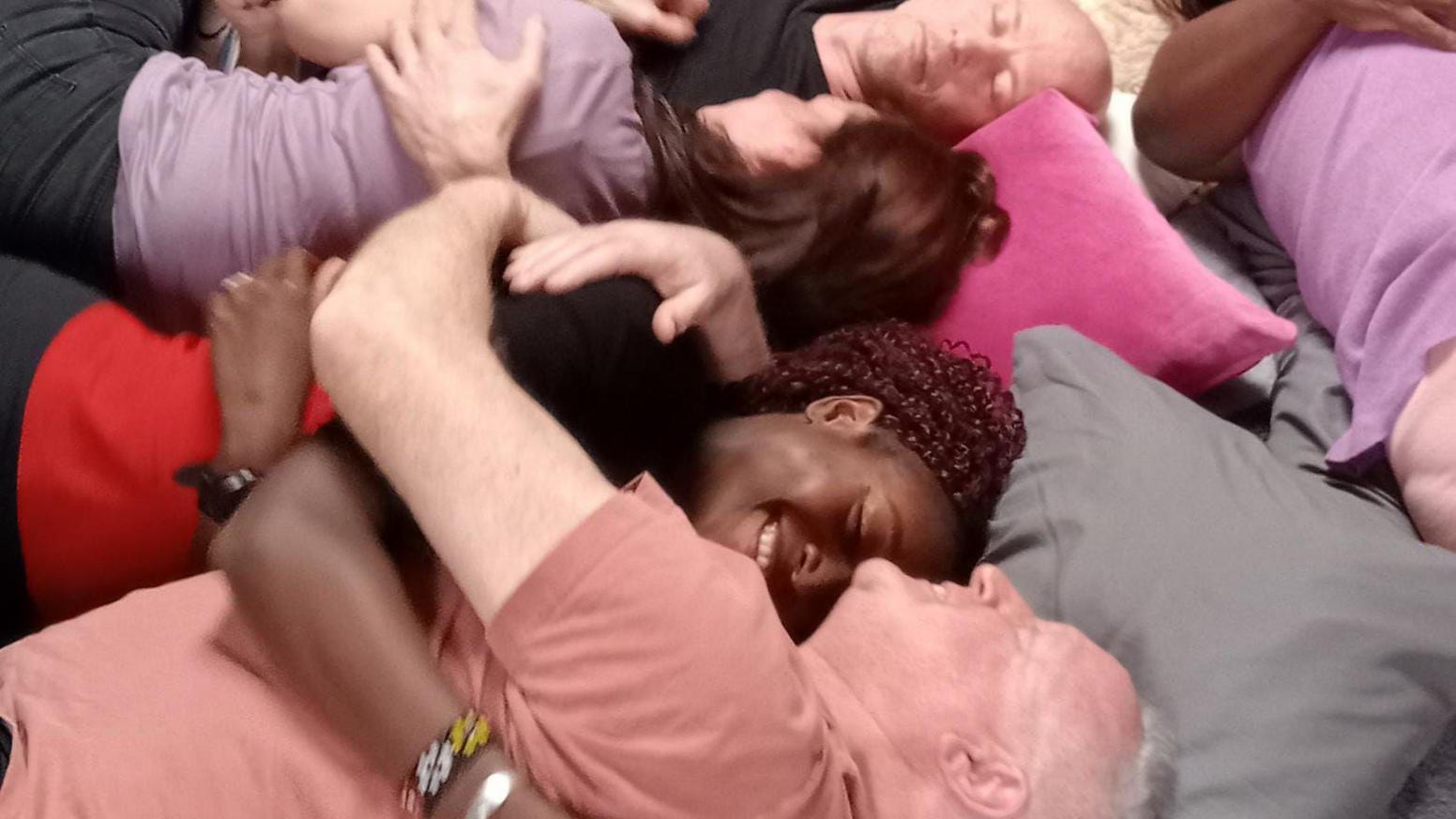
The events are attended by a variety of ages and genders
Samii discovered cuddle therapy after watching a documentary showing how popular it was overseas.
However, in the UK, she finds that people are more reluctant to touch and be touched.
She blames the Covid pandemic and lockdowns for simultaneously making people "crave it more" but also be "more fearful of having it".
She explains: "It's huge in America and in Europe, not so much over here, but we really need it and people wouldn't come to professional cuddlers like myself if we did not need that.
"We think we're all connected because we're online, but that's why we're so much more disconnected.
"We're all seeking that connection and there's no shame in saying, 'I just want to be held by someone and I want to be hugged. I want to be seen and drop my walls and and have that'."
The science of cuddles
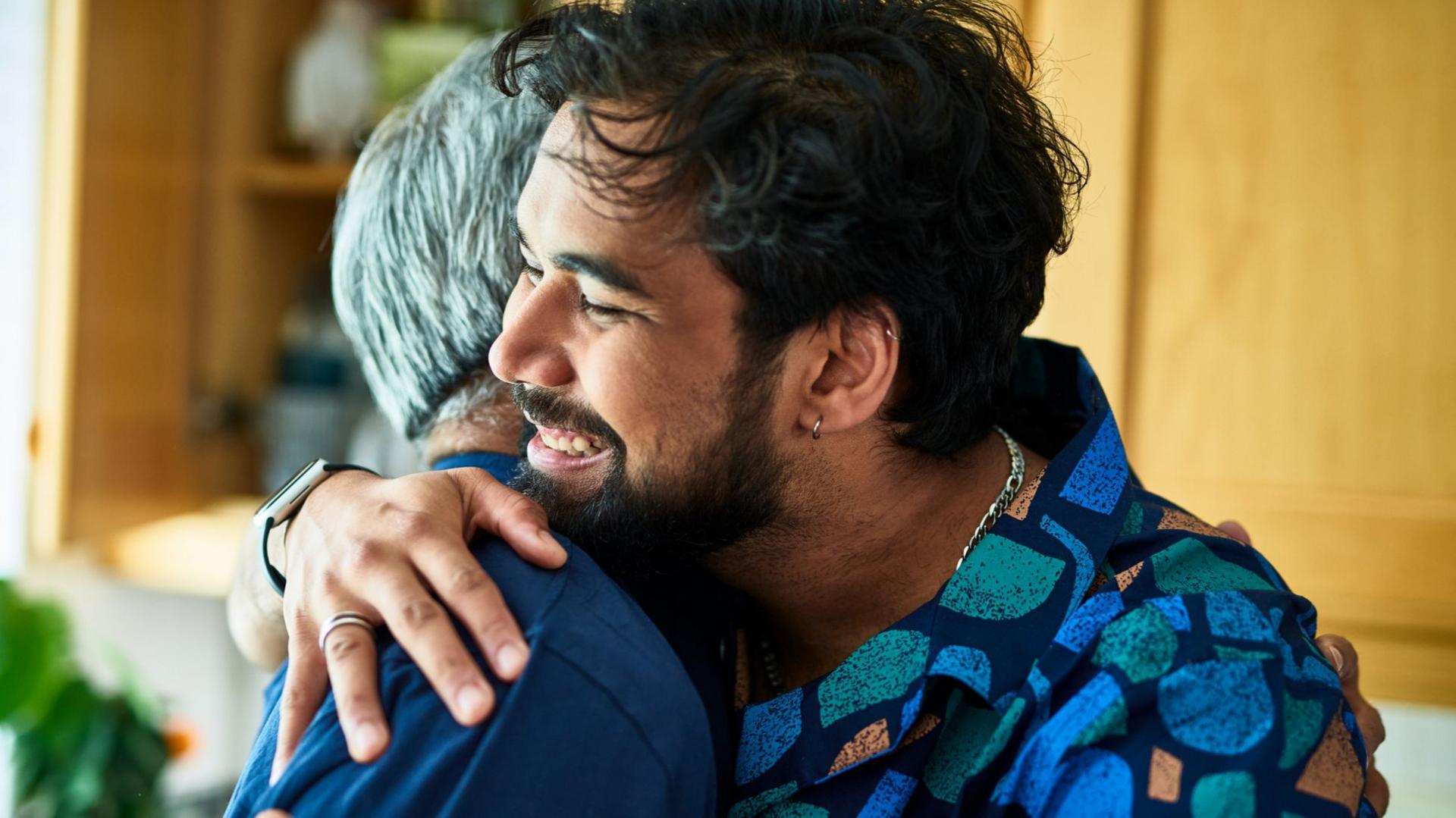
One expert suggests people need to feel familiar with those they are cuddling
Touch can benefit physical and mental health, according to a paper by Danish neuroscientist Dr Julian Packheiser, external and his colleagues from the Institute of Cognitive Neuroscience at Ruhr University Bochum, Germany.
They found there was no difference in health benefits in adults between touch from a familiar person or a health care professional.
However, Sophie Scott, professor of cognitive neuroscience at University College London, argues that while touch has demonstrable benefits, the relationship between people involved is important.
Referring to another study, she says: "They put people in a scanner and physically hurt them; you could see the brain responding to the pain.
"However, when a partner held their hand, they had a reduced response to the pain. So there are chemical changes making you feel better, but that isn't a random person; that is your partner.
"What worries me slightly about somebody doing that professionally is you need to develop that relationship. You wouldn't just let anybody hold your hand.
"People like going to get their haircut or a manicure. Those are quite neutral parts of the body. Hugging might get a bit closer to their danger zones.
"What I'm saying is people would need to feel safe. If they didn't feel safe, it would be highly adversive to do that".
Numerous other studies have highlighted the benefit of touch and its potential to benefit mental and physical health, external.
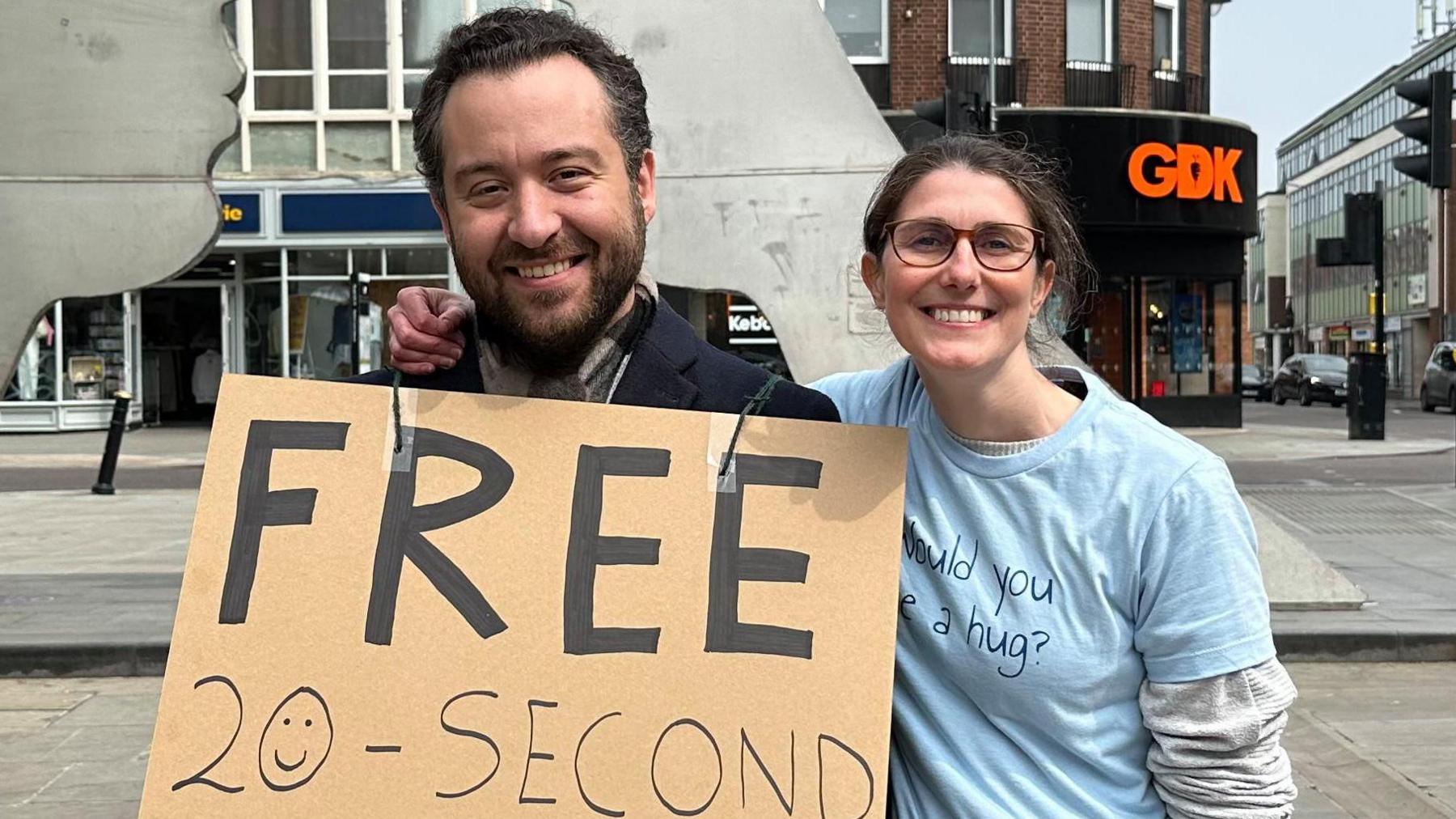
Pep Valerio encourages "anybody with an open mind" to try cuddle therapy
Mr Valerio had been exploring alternative methods of healing, such as tapping and tai-chi, when he came across cuddle therapy.
"It relieves stress, promotes relaxation and togetherness," he says.
He says Samii has created a safe environment by playing a soothing soundtrack and getting people to take part in warm-up hug-based exercises at the start.
"Once you've done a few exercises, to break down those walls, it feels like the most natural thing lie on the floor and cuddle a lot of strangers," he says.
"There are people are crying before we have settled into the cuddle puddle, just based on the hug-based exercises we've done and some of the emotions that are brought up."
He has also taken part in one-to-one exercises with Samii, which he says allow for "a deeper bond".
"Spooning feels vulnerable, especially being the guy spooned by a woman. It allows you to experience holding and being held," he says.
"Afterwards I feel held, I feel supported, I feel as if I've shed some of my load and my wall has been lowered."
Get in touch
Do you have a story suggestion for Beds, Herts & Bucks?
Follow Beds, Herts and Bucks news on BBC Sounds, Facebook, external, Instagram, external and X, external.
Related topics
- Published14 May 2021
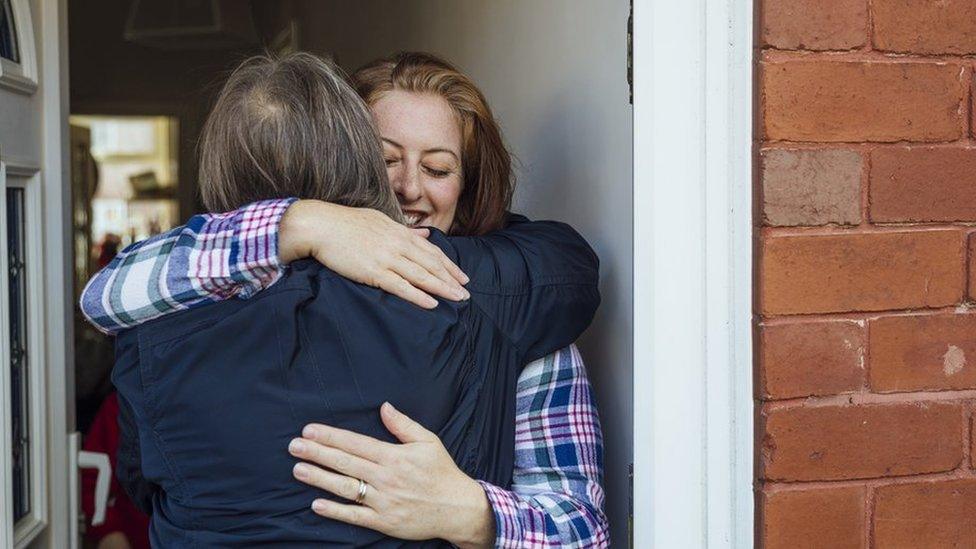
- Published11 September 2024

- Published11 August 2024
